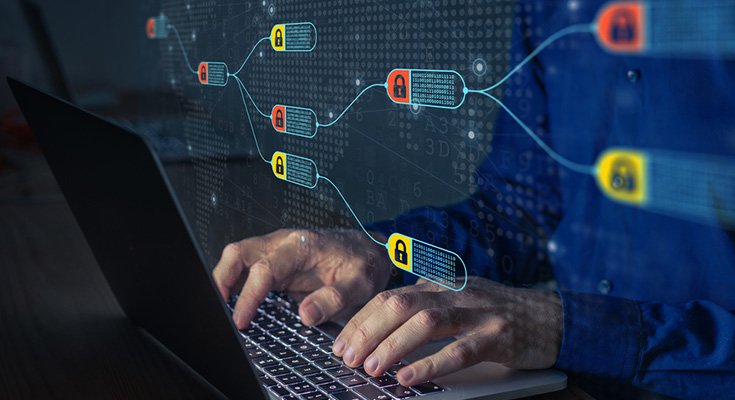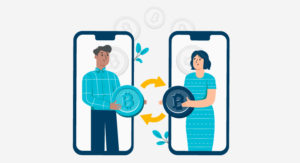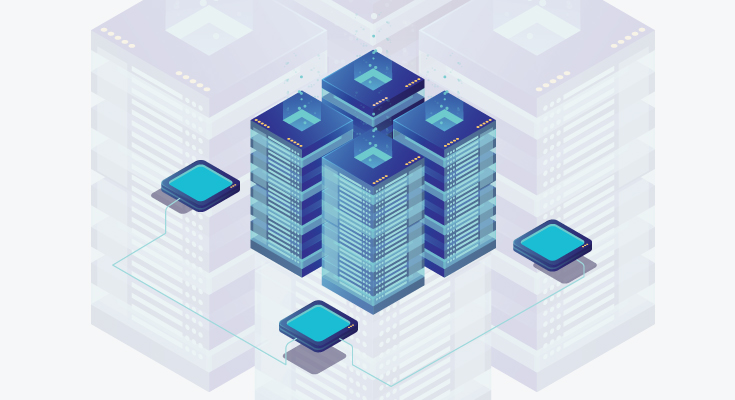Blockchain Technology, and how does it work?

You must have heard about “blockchains” in the context of Bitcoin, Ethereum, and other cryptocurrencies. You probably must have also seen how many people have been raving about this technology. But why, what exactly is so special about this technology? Its link with cryptocurrencies has also led to many people believing that blockchain is Bitcoin. So they think that they’re getting excited about cryptocurrency. But nope, blockchain is a technology that is used in the implementation of these cryptocurrencies.
So, if you’re a newbie to this amazing new technology, read ahead and know about blockchain and its development process better.
What is blockchain technology?
Blockchain technology, also called Distributed Ledger Technology (DLT), is a decentralized digital ledger. It is a system of recording information so that it is difficult, if not impossible, to change, hack or cheat the system.
Primarily, it is a digital ledger of transactions distributed across the entire network on computer systems on the blockchain. Each block in the chain holds information on the transactions. Every time there’s a new transaction, it is recorded on the ledger of every participant. So, it is a decentralized database that is managed by the participants and hence the name, distributed ledger system.
This technology has three main ideas: unalterable history of transactions, transparency in use, and cryptographic signature. An analogy to understand this technology better is Google Docs. Suppose you create a document and share it with your friends. Here, the document is distributed and not copied and transferred. So, this way, you’ve created a decentralized distribution chain where everyone is accessing the document simultaneously.
There’s no waiting for a person to finish making changes so that others could start. All the modifications in the document are recorded in real-time, so all the changes are transparent. Blockchain is, of course, more complex, but the analogy explains the three main ideas of the technology.
Key Elements of a Blockchain:
- Distributed ledger technology: All the blockchain participants have access to the distributed ledger and its records. The transactions are recorded only once with the shared ledger, so there are no efforts wasted in duplication.
- Immutable records: once a transaction is recorded, no participant can make any changes in the ledger. Even in the case of an erroneous trade, a reverse transaction is made, and both are recorded.
- Smart contracts: A set of rules are auto-implemented for speedy transactions.
How does blockchain technology work?
- Each transaction is recorded as a “Block”:
A transaction implies a movement of a tangible (product) or intangible (intellectual) asset. So the block holds all the transaction data and answers everything- who, what, when, where, amount, and even the condition (temperature).
- Each and every block is connected to the block before and after it
The blocks form a chain of data as the ownership of the asset changes. The blocks are securely linked together & record the exact time and sequence of transactions. There’s no scope for any alteration or any new block inserted between two linked blocks.
- Transactions are chained together: blockchain
Each new block strengthens and verifies the previous block and hence, the entire blockchain. So, the blockchain shows its key strength, immutability, and brings forth a trustworthy ledger.
What are the types of consensus protocols?
Consensus protocols are used to validate transactions in a blockchain. A few are mentioned as follows:
- Proof of Work (PoW): it is the original consensus algorithm in the blockchain network. It is used for a transaction’s confirmation and creation of a new block to the chain.
- Proof of stake (PoS): it is used to reach distributed consensus and validate transactions. There are several other forms of Proof of Stake protocols like Delegated PoS, which improves the speed of block creation and leased PoS, which consumes less energy.
- Proof of elapsed time (PoET): this algorithm works on permissioned blockchain, and you need permission to access the chain. It covers transparency with a specific technique and assures secure login.
- Byzantine Fault Tolerance (BFT): as per this algorithm, two nodes in a network can securely interact knowing that they display the same data. There are several other forms of BFT, like Practical BFT, Delegated BFT, simplified BFT and Asynchronous BFT.
What are the applications of blockchain technology?
Applications of a blockchain are as follows:
- Smart Contracts: it is a code that is auto-executed when specific conditions are met during a transaction.
- Sharing economy: you can directly engage in a transaction without the involvement of a third party (e.g., banks).
- Supply chain audits: you can easily cross-check the claims made by the companies about their products. With the help of distributed ledgers, you can easily & quickly trace the products within the supply chain in real-time.
- Intellectual property protection: with the help of smart contracts, you can protect copyrights & automate content sales. Thereby protecting your intellectual property.
What are the types of blockchain platforms?
Many types of blockchain platforms are available, each satisfying a particular development need. Some of the major blockchain platforms are:
- Ethereum: open-source blockchain platform on which you can run smart contracts on a custom blockchain.
- EOS: with EOS, you can design vertical & horizontal scaling of decentralized apps (DApps).
- Stellar: it is an open-source distributed payment ledger that allows you to connect with payment systems.
What value does blockchain add to your platform?
- More Transparency: the history of transactions is always transparent with blockchain. It is a distributed ledger, and all the members share the same updates in a ledger. The consensus on the network validates all the updates. Thereby, the data is secure & accurate.
- Enhanced Traceability: you can easily track and manage your supply chain.
- Increased Speed: the current processes are paper-based and time-consuming as they involve third parties & duplication of efforts. All these problems are eliminated with blockchain, and processes pick up speed.
- Reduced Costs: with blockchains, third-party involvement is eliminated. You also don’t have to engage in making documentation or checking them before transactions. And that results in cost elimination.
What is the blockchain development process?
You can refer to a custom software development company that can help you through the development process. The blockchain development process involves 9 stages:
- Goal identification
Make a problem statement listing all the issues you wish to resolve with your proposed solution. The solution should be beneficial and improve your business. Analyze whether you should switch to blockchain technology or make a new application from scratch.
- Select the right blockchain platform
Once you’re sure you need a blockchain solution, you need to select the right blockchain platform. The chosen platform should meet your business requirements. The choice should be driven by the problems you want to resolve, like consensus mechanisms.
- Brainstorming ideas
The next step involves drafting business requirements and brainstorming ideas. Decide which technology components should be added as on-chain or off-chain entities on the proposed blockchain system. Create a roadmap to build the project in time. Create DFDs, conceptual workflows, and other documents to create your blockchain application.
You should decide on the language you’re going to use to develop the frontend, backend, and servers as well. For example, you can choose angular development or React Js web development services for the frontend.
- Proof of concept
With proof-of-concept, you decide the practical applications and viability of a project. You can do that by either developing a prototype or via theoretical buildup. In the theoretical build-up, you theoretically make up different use cases to understand the feasibility of the application and explain the project’s scope and parameters.
- Visual & technical designs
This step involves designing the look & feel of your application and making technical designs to understand the application’s technology architecture. So, you’ll create a user interface for each component of your application. You will also design APIs to integrate the UI to run an application in the back-end.
- Development
At this stage, the actual development of your application will start. The developer needs to stick to the decided design and blueprint of the application.
The development of blockchain technology is a challenging task which is why it takes a lot of time to build it. Since blockchains are immutable ledgers, it is almost impossible to correct any corrupted data. Even to deliver a fix, you need to coordinate with all the parties in the blockchain.
So this step needs to be executed with extreme care.
- Testing
At this stage, you’ll test whether the developed application does exactly what it is expected to do—nothing more and nothing less. Testing blockchain applications is similar to testing normal applications with a few more metrics added. For example:
- Chain size: longer chain implies more data in it, and that implies more space requirement in the datastore. We need to determine how much space a blockchain can take after a period of time.
- Throughput: what is the number of transactions per second (TPS). A high TPS is good, but that also means a more network load and the inability of every node to catch up.
- Security & cryptography: code needs to be checked regularly to ensure its flawless.
- Data integrity: all the data on the blockchain should be consistent.
- Data propagation: distribution of data from one node to another without disruption.
Multiple software testing methods can be employed, like manual and automation testing.
- Deployment
The deployment phase refers to deploying the final developed blockchain application to the customer.
- Maintenance
The maintenance stage involves providing training, customer support, and launching updates.
Blockchain technology offers a myriad of benefits, it is secure, reliable, speeds up business transaction processes, and so much more. The idea of incorporating blockchain technology in your business is appealing and indeed good. But you should know that it takes a lot of time to build an application and for everyone to warm up with it. Building blockchain software is an extensive process, and so you need to clearly define your requirements and then start with the process.












